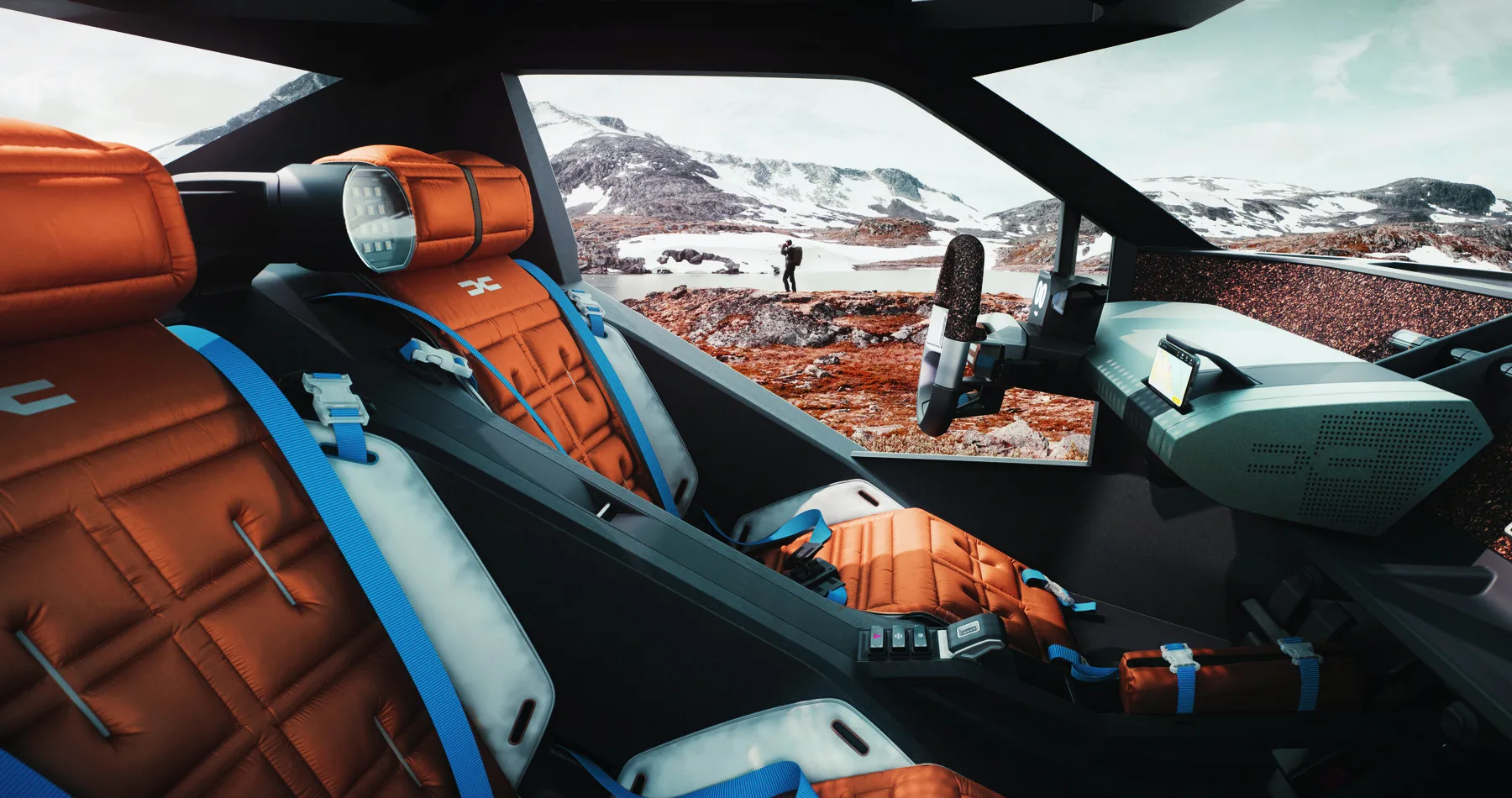The evolution of transportation has been a testament to human innovation and technological advancement. One of the most fascinating aspects of this evolution lies in the transformation of vehicle cockpits. Future car cockpits have the potential to completely change how we view and engage with transportation, starting with the simple manual controls and progressing to the incorporation of advanced technologies. This detailed exploration delves into the envisioned landscapes of cockpits across various modes of transportation, highlighting the elements, technologies, and experiences that may shape the future.
Inside the cockpits of Tomorrow’s vehicles
Automobiles:
Future car cockpits should see a significant makeover that combines state-of-the-art technology with an emphasis on increased connectivity, comfort, and safety. One shift lies in the eradication of conventional steering wheels and pedals. These antiquated controls have been superseded by autonomous driving technology, opening the door for creative designs that put the experience and involvement of passengers first.
Autonomous Interface:
The cockpit of an autonomous vehicle will resemble a comfortable lounge or a mobile office rather than a conventional driver-centric space. Touchscreens, gesture controls, and augmented reality displays will dominate the interior, offering passengers intuitive ways to interact with the vehicle’s systems and entertainment features.
AI Integration:
Artificial Intelligence (AI) will play a vital role in future automotive cockpits. Advanced AI assistants will cater to passengers’ needs, offering personalized recommendations, adjusting climate settings based on individual preferences, and even providing concierge-like services such as restaurant reservations or suggesting entertainment options during the journey.
Biometric Integration:
Biometric sensors embedded in the cockpit will monitor passengers’ vital signs, allowing the vehicle to adapt to the environment based on their physiological state. For instance, the system might adjust lighting, temperature, or seating position to optimize comfort and well-being.
Sustainable Materials and Design:
Future cockpits will also prioritize sustainability. Recyclable materials, eco-friendly fabrics, and modular designs enabling easy upgrades and repairs will become standard, aligning with the global shift towards environmentally conscious practices.
Aircraft Cockpits
Air travel represents another domain where cockpit design and technology continue to evolve. Future cockpits on aircraft should look very different because of improvements in automation, avionics, and safety features.
Glass Cockpit Evolution:
The concept of the glass cockpit, characterized by digital displays replacing traditional analog instruments, will evolve further. Seamless integration of augmented reality (AR) technology will overlay vital information onto the pilot’s field of view, offering enhanced situational awareness and navigation aids.
Autonomous Systems:
Like automobile developments, the aviation sector is heading toward autonomous or semi-autonomous flight capabilities. Cockpits will feature advanced AI systems capable of managing various flight parameters, optimizing routes, and assisting pilots in critical decision-making processes.
Holographic Interfaces:
Holographic displays and controls within the cockpit will provide pilots with an immersive, interactive interface for managing aircraft systems and monitoring crucial data. These holographic elements will enable intuitive interaction, minimizing cognitive load and enhancing operational efficiency.
Enhanced Safety Measures:
Enhancing safety in airplane cockpits will be made possible by integrating biometric authentication for access control, real-time crew health monitoring, and predictive maintenance technologies. Predictive analytics and AI-driven diagnostics will anticipate and address potential issues before they escalate.
Spacecraft Cockpits
The realm of space exploration represents the pinnacle of technological achievement. As spacecraft cockpits continue to evolve to meet the specific needs and difficulties of interstellar travel, they will see unparalleled improvements.
Virtual Environments:
Via high-resolution screens or virtual reality (VR) interfaces, spacecraft cockpits will imitate immersive virtual environments and provide pilots with sweeping views of space. These interfaces will offer real-time visualizations of celestial bodies, enhancing the crew’s experience during long-duration missions.
AI and Autonomous Navigation:
AI-driven autonomous navigation systems will navigate spacecraft through complex trajectories, considering gravitational fields, celestial objects, and potential hazards. These systems will assist astronauts in maneuvering spacecraft, mitigating risks, and optimizing travel routes.
Bioregenerative Systems:
Spacecraft cockpits will integrate regenerative systems to support prolonged missions. These systems will recycle air, water, and waste, creating a self-sustaining environment for crew members during extended space exploration.
Telepresence and Communication:
Enhanced telepresence capabilities will facilitate seamless communication between astronauts and mission control. Holographic displays and real-time data transmission will enable efficient collaboration and problem-solving across vast distances.
The evolution of cockpits across different modes of transportation offers a glimpse into a future characterized by innovation, seamless integration of technology, and a heightened focus on safety, comfort, and sustainability. The cockpit of the future, whether it be in an aircraft, spacecraft, or land vehicle, represents the convergence of state-of-the-art innovations that will completely transform how we travel the planet and beyond.
READ MORE :
- All About Aston Martin Cars
- Audi e tron Review
- Bently Continental GT price in India
- BMW X1 Price in India
- Brezza 2022 Launch date in India
- Why Bugatti Is So Expensive?
- Best car dealers in Dubai
- Concorde Motors Kochi
- Honda Showroom Kochi
- Indus Motors Thevara
- KIA DEALERS IN PUNE
- Lamborgini Showroom in India
- Nippon Toyota Kalamassery
- Rolls Royce Showroom in India
- Sai Service Pathadipalam
- Top 10 Car Showrooms Kottayam,
- Top 5 Car Showrooms Trivandrum
- BREZZA 2022 vs TATA NEXON
- Citroen C3 price in India
- 2021 Chevrolet corvette vs Mustang Shelby GT50
- Is Mercedes-Benz better than BMW?
- EcoSport Price in Kerala
- Upcoming Ford cars in India –
- Alcazar
- Cars price in India
- Hyundai Creta
- i20 Price in Kerala on-road
- venue price in India
- KIA Carens price in India on road
- Carnival 2021 India
- KIA Cars on road price in India
- seltos price in Kerala
- Kia sonet price in Kerala
- Landrover Range rover Evoque review
- Mahindra Bolero Neo
